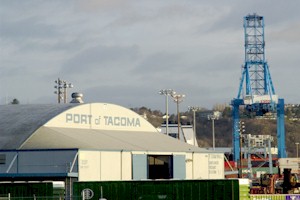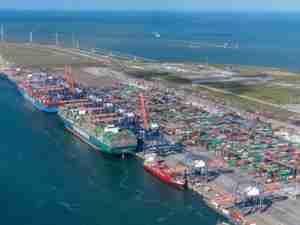"A growing trend is to de-van at ports of entry and transload into domestic boxes," said Susan Becklund, the Port's Director of Operational Services. "This saves the shipper time and expense by avoiding the cost of repositioning empty containers from the ultimate point of destination. Depending on cargo, a CFS transload may be the right choice."
For a growing number of Port of Tacoma customers, the CFS is the right answer.
Located on the Port-operated Terminal 7 with a 2,700-foot berth, the fully equipped 100,000-square-foot facility offers dockside rail, 24-hour security and highly skilled labor with more than three decades of CFS experience. The CFS is adjacent to the North Intermodal Yard that serves "K" Line and Yang Ming Line, and close to the South Intermodal Yard that serves APM Terminals.
Becklund says this proximity is important to CFS customers. "By moving containers directly from a ship to the CFS – all on terminal – then transloading without transiting a public road, shippers save time and money."
The Port's new agreement with the Union Pacific Railroad – which moved much of its domestic intermodal volume to Tacoma – is providing shippers another opportunity to move cargo even more efficiently through the CFS. It also eliminates the potential need for overweight highway permits.
Container Freight Foreman Pat Faker noted that the CFS is in demand by a growing number of exporters, as well. "If a customer wants to export paper pulp, for example, we can receive and store their cargo, transload into ocean containers and deliver directly to the ship at Terminal 7," he said.
The special demands of transloading allow the unloading and packing expertise of the CFS longshore workers to shine. "Our CFS labor partners really take care of our customers' cargo," said Port Operations Superintendent Penny Justice. "They have become very specialized and have years of experience in these types of cargo. And they put thought into how to best manage and handle the wide variety of cargoes handled here."
Justice offered an example of the longshore worker's careful attention to their work: "A customer importing high-value machinery expected a ratio of three boxcars for every incoming container," she explained. "Our labor partners took time to recalculate the maximum cube and were able to do the job with two boxcars. This represents a significant cost savings for our customer."











